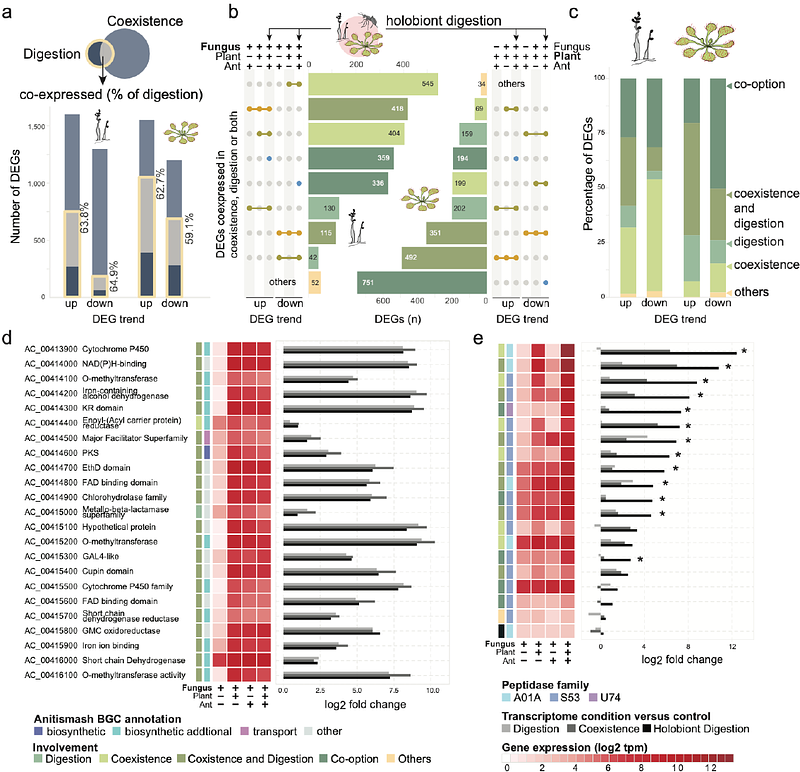An acidophilic fungus is integral to prey digestion in a carnivorous plant

An acidophilic fungus is integral to prey digestion in a carnivorous plant
Sun, P.-F.; Lu, M. R.; Liu, Y.-C.; Lin, Y.-f.; Hoh, D. Z.; Ke, H.-M.; Wang, I.-F.; Lu, M.-Y. J.; Kirschner, R.; Lin, Y.-C. J.; Chen, Y.-L.; Tsai, I. J.
AbstractCarnivorous plant leaves, such as those of the spoon-leaved sundew Drosera spatulata, secrete mucilage which hosts microorganisms potentially aiding in prey digestion. We characterised the mucilage microbial communities and identified the acidophilic fungus Acrodontium crateriforme as the ecologically dominant species. The fungus grows and sporulates on sundew glands as its preferred acidic environment. We show that the A. crateriforme has a reduced genome similar to that of other symbiotic fungi. Based on the transcriptomes when encountering prey insects, we revealed a high degree of genes co-option in each species during fungus-plant coexistence and digestion. Expression patterns of the holobiont during digestion further revealed synergistic effects in several gene families including fungal aspartic and sedolisin peptidases, facilitating the digestion of sundew\'s prey, as well as transporters and dose-dependent responses in plant genes involved in jasmonate signalling pathway. This study establishes that botanical carnivory is defined by multidimensional adaptations correlated with interspecies interactions.